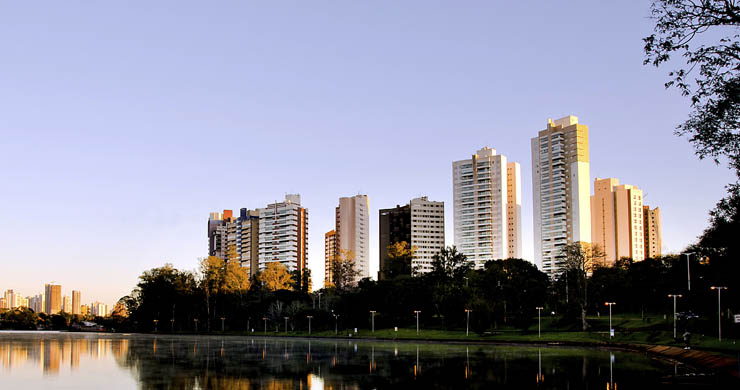Living in Rio
Welcome to Rio
Rio de Janeiro (or just ‘Rio’) is the second largest city in South America and one of the most famous cities in the world. As Brazil develops, Rio is in many ways the most challenging place for city, state and national governments. It is overcrowded and large housing areas have developed without proper planning, meaning that often there were no water pipes, sewerage systems or even streets and roads suitable for vehicles bigger than a motorbike.
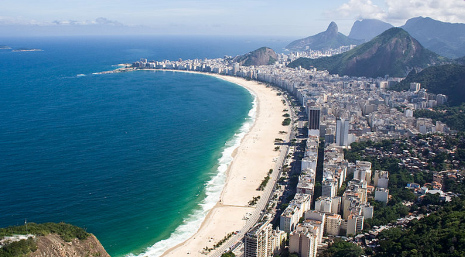
The city is surrounded by steep mountains and the ocean which prevent expansion. Often the city streets become ‘gridlocked’ for hours with record breaking traffic jams, frustrating residents and holding back business and economic growth. Ironically, it is these same physical barriers – towering peaks and beautiful beaches - that make Rio one of the most attractive cities in the world creating an immense potential for the growth of tourism.
Rio was chosen as the host city for the 2016 Summer Olympics and will be the most important city in the 2014 World Cup football tournament. These events are in many ways intended to help overcome the problems of Rio in the same way that the 2012 Olympic games were intended to help address longstanding social and economic challenges facing Newham in East London.
Challenges facing Rio - Urbanisation
A favela or shanty town such as Rocinha in the picture below is an unplanned housing area in Brazil. Throughout most cities in LEDCs there is a massive amount of inwards migration from the countryside - a process called urbanisation.
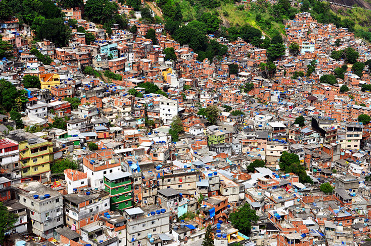 The Rocinha favela in Rio, home to nearly 70,000 people according to a 2010 census. in 2011 hundreds of police and soldiers moved into the favela to crack down on drugs gangs and bring law and order to the area.
The Rocinha favela in Rio, home to nearly 70,000 people according to a 2010 census. in 2011 hundreds of police and soldiers moved into the favela to crack down on drugs gangs and bring law and order to the area.
Throughout Africa, Asia and South America these poor migrants often end up on marginal land, e.g. dangerously steep slopes or areas prone to flooding. Here they build rough shacks from waste wood, cardboard and plastic sheeting. Over time these areas become crowded with other shacks but have no services such as water. Sometimes they will be cleared with bulldozers by city officials but they soon reappear. More fortunate residents may make enough money working to be able to improve their homes and when this happens the areas may become known as ‘self-help housing’.
Eventually favelas may become permanent once they have been improved, with residents rebuilding their homes with bricks, cement, concrete and steel sheet or tile roofs. However at no point have proper roads, water or sewerage systems been constructed. City officials may recognise these areas as part of the permanent city however they have major problems as they cannot even collect rubbish due to lack of vehicle access.
There is no space for public buildings such as schools or police stations in the shanty towns. In fact, one terrifying problem is that until they are officially recognised districts there is no policing and they frequently come under the control of violent gangs. Once an area is recognised, the police have to wage virtual wars to establish the rule of law. This is happening at the moment in Rio to make the city safer before the arrival of the World Cup and then the Olympic games.
Brain box...
Urbanisation
Urbanisation is the biggest form of migration in the world today. In poorer parts of the world the population is rapidly expanding as access to better medical care reduces death rates. The countryside cannot provide enough work or opportunities for the increased population, so people migrate to towns and cities. Countryside regions are described as rural areas. Towns and cities are sometimes described as rural areas. Towns and cities are sometimes described as urban areas. Hence the terms ‘urbanisation’ or sometimes ‘rural to urban migration’.
By contrast, in many MEDCs like Wales people often want to live in the countryside so we are seeing people from urban areas moving to rural areas a process called counterurbanisation.
Challenges facing Rio - Gridlock
Transport in Rio’s favelas is a major problem with only pedestrians or motorcycles able to navigate some of the mazes of paths, which are often on steep slopes.
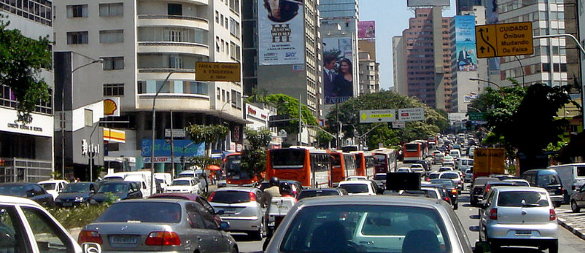
The older but more affluent Centre Zone and South Zone of the city have some of the worst traffic jams in the world. This is the case because with development comes wealth, and with wealth comes cars. The Centre Zone is the C.B.D. of Rio making it the destination each day of the majority of Rio’s workers. Many of these return at the end of the day to the more residential South Zone close to Rio’s famous beaches. For several hours – morning and night - these zones are gridlocked with traffic jams on a regular basis.
Unlike most cities, Rio cannot go through the process of urban sprawl or spreading out. As mentioned above, Rio is surrounded on all sides by either high, steep slopes or the sea. So what is Rio going to do?
A way forward? – Edge cities
Faced with the problems of Rio, the planners decided to copy a solution from the USA – edge cities (see brain box below). They started by digging tunnels through the hills to link up with areas of flat land further up the coast. The first of these areas is called Barra (pictured below). Rio started to build a completely new city from scratch, avoiding the mistakes of Rio, thus bringing jobs and workers from Rio to Barra.
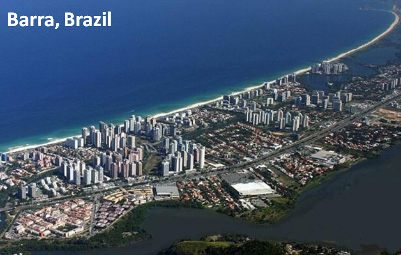
Barra aims to be a perfectly planned new city, with modern infrastructure in the forms of transport, media communications, schools, healthcare & leisure. Barra will further benefit by being the site for most of the 2016 Olympic games.
As Barra grows it will start to depopulate Rio itself and the plan is that the lower population levels will allow the city officials to buy and remove unnecessary properties to expand road networks in all zones, especially the favelas. Modern infrastructure can be placed beneath the roads allowing power, sewerage, water and telecommunications of all types to reach all areas of the city. Hopefully, once this is done, mass transportation systems such as those in Curitiba (see article 3 in this issue) can also be established, removing even more traffic from the roads.
Brain box...
Concept - edge cities
The concept of edge cities developed in the USA. Cities such as Los Angeles were suffering from daily gridlock of major route ways which was affecting many businesses and the quality of life and productivity of workers. Many large companies decided to relocate just outside the edges of the cities and establish their businesses in specially planned new settlements.
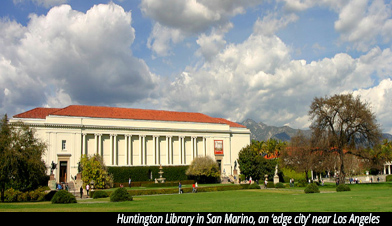
They also developed housing areas, shopping malls and leisure facilities as well as hospitals and schools. The workers followed and could often have better, cheaper housing without the pollution and crime problems of the old city as well as avoiding several hours per day sitting in traffic jams.
Pupil Activity
Virtual Fieldtrip 2:
- Work in a small group of 2 or 3
- Use a G.I.S. to find photographs to compare different regions within Rio.
- Compare these with Barra
- Read the case study of Curitiba (article 3) and compare differences and similarities between Rio and Curitiba.
